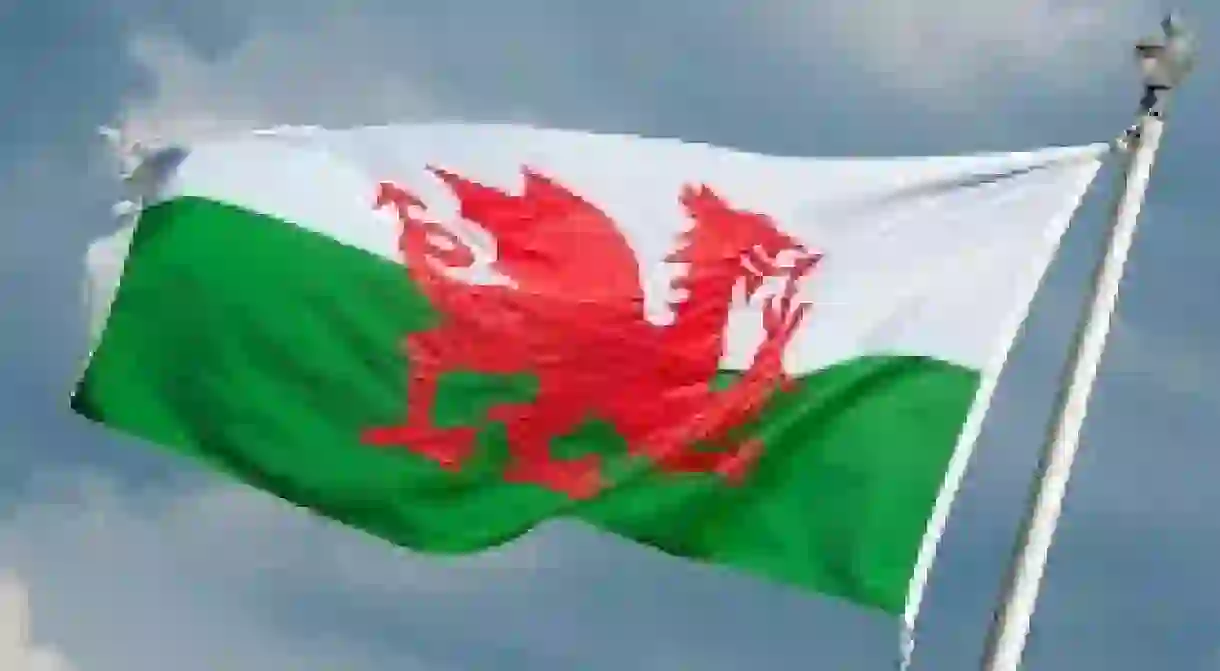A Brief History of the Welsh Flag and its Red Dragon

Find out why Wales has a creature which doesn’t exist on its flag — with a history which includes King Arthur, mythology and ancient power battles
Wales is unique for many reasons, not least of these is its unusual flag.
While the other countries of the UK, Scotland, Ireland and England, are represented in the Union Jack, Wales isn’t — other than indirectly by the cross of St George standing for the former Kingdom of England, which used to include Wales.
Wales instead stands alone with its much more detailed, unusual flag of a red dragon on a green and white background. The head is wolf-like and the body and extended tongue are designed to be serpentine. It is thought to be one of the oldest national flags still in use.

The dragon has been associated with Wales for a long time, but its origins and why it is on the flag are unclear. The oldest recorded use of the dragon to signify Wales, goes way back to the Historia Brittonum, written by the historian Nennius around 820.
Earliest mentions in language start even earlier in the sixth century with the Welsh word “draig.” But rather than dragon, it refers to a strong leader. Poets would often talk about a draig who would free the Welsh people from English oppression, and so the word seems to suggest fierce warrior or a symbol of the strength of the Welsh people.
Even before that, in the fifth century, the Welsh Kings of Aberffraw are said to have used the dragon to symbolize their might after the Romans withdrew from Britain.
In the 12th century, Geoffrey of Monmouth wrote in Historia Regum Britanniae that the dragon has connections to the legends of Arthur (who was Welsh). The name of Uther Pendragon, who was Arthur’s father, means Dragon Head. Geoffrey also mentions the prophecy of Myrddin (or Merlin) which predicts an enduring struggle between a red dragon and a white dragon, i.e., the fight between the Welsh and the English.

After the Prince of Wales, Owain Glyndwr, used the dragon in the year 1400 as a symbol of revolt against the English, the dragon was brought to England by the House of Tudor, direct descendants of the Welsh Royal Family who held the English throne from 1485 to 1603.
The green and white background of the flag were the colors of the standard of the first Tudor king, Henry VII, making it closer to the modern day flag we have now.
During their reign, the Tudors used the red dragon as part of the Royal Arms of England and on Royal Naval Ships.
As Wales became more nationalist in the 1900s the question of the flag, which was still unofficial (it was claimed Wales had no national flag), came up again.
It wasn’t officially recognised until 1959 however, following political pressure sparked by the refusal to grant the Welsh flag’s appearance on St David’s Day.
After the resulting protests and a campaign by the Gorsedd (the unofficial assembly of Welsh bards), the Queen stepped in, conceding that “only the Red Dragon on a green and white flag should be flown on Government buildings in Wales.”













